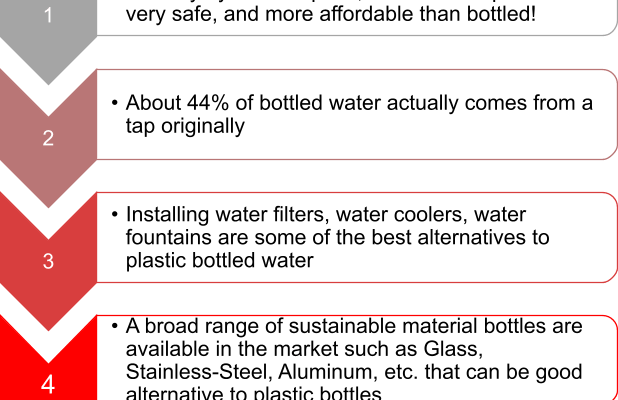The United Arab Emirates (UAE) bottled water is one the fastest growing sector and a significant source of revenue for the nation. Domestic bottled water market focuses on the development and enhancement of plants, factories and market (storage and distribution) in the country. There has been remarkable progress in the field of Bottled Water Industry in the past 5 years. The availability of different flavors and types of flavored water has also made it a popular beverage choice among consumers. Additionally, the UAE faces several water-management challenges such as – scarcity of groundwater reserves, high salinity levels in existing groundwater sources, high cost of producing clean drinking water, limited reuse of water, and limited collection and treatment of wastewater outside of urban areas. The UAE had been ranked the eighth largest per-capita consumer of bottled water in the world owing to high temperatures, low rainfall, and increasing demand with increasing population. Sani Water’s new blog series titled “Bottled Water Series” will cover various elements of the bottled water industry viz. 1) factors contributing to rise of bottled water and impact of bottled water on human health, and 2) manufacturing process of bottled water and environmental impacts of bottled water. 3) climate change impact and 4) eco-friendly alternatives to plastic bottled water. Sani Water has been at the forefront of providing their customers with the latest research topics in the drinking water industry that are applicable on a regular basis. With “Bottled Water Series”, Sani Water aims to educate and inform their customers about the severe health, environmental, sustainable, and eco-friendly alternatives to bottled water.
BOTTLED WATER ALTERNATIVES
The environmental, especially global climate change and health impacts of using bottled water are well documented and discussed at length in other articles in the Bottled Water Series. This article discusses the eco-friendly alternatives to bottled water.
REFLECTION POINTS

Residential Water Filters
The release of greenhouse gases that contribute to the warming of the atmosphere could be justifiable if the health benefits were unequivocal, but unfortunately, they are not. According to Consumer Reports, 49 percent of the bottled water does not come from natural sources, such as underground springs, but from the tap. Moreover, if the water comes from a local source and is exempt from federal or state regulation, it is less likely to be pure than water from the municipal supply. Many health organizations over the world recommend installing a filter certified by the NSF or WQA on the tap as a safe and ecological alternative to drinking bottled water.
One great solution to this problem is to install a whole-house or point-of-use water filtration system. The reliance on bottled water can be completely eliminated by turning every tap in the home into a clean, delicious source of filtered drinking water. Not only will it help the planet, but also save money in the long run, too. Sani Water has published many articles on the different types of water filtration devices available in the market. Refer to the previously published articles for more information.
Sustainable Material Bottles
- Glass – Bottles made of glass are widespread today. Glass bottles come in different sizes and holding capacities. The best choices range from 200 millimeters to 1.5 liters, though. While this is a fragile material, glass is uncompromising, keeps drinks tasting great, maintains its original integrity, and stays colder longer out of the refrigerator than plastic does. It is also infinitely recyclable and maintains its quality every time it is remade. They are green and good for your health. Storing water in these bottles will not change the smell and taste since they don’t include chemicals such as Bisphenol-A, which is common in plastics. Besides having the right water coolers in your household or business settings, you should encourage the use of glass bottles.
- Stainless Steel – Reusable water bottles help save the atmosphere by reducing the number of water bottles ending up in landfills. Since stainless steel bottles are free of toxic elements like phthalate and BPA, which are common in plastic containers, they are a great way to minimize intake of toxins and keep the atmosphere safe. These bottles do not include a resin lining, so the amount of toxin that enters your body through water intake is reduced. Stainless steel keeps water and all other drinks cold even longer than glass. Metal is a natural temperature conductor, so if it takes on something cold, it will keep it cold, and if its contents are hot, they will stay hot.
- Aluminum Bottles – Aluminum bottles have an epoxy or enamel layer to increase usability and durability. Aluminum is 100 percent recyclable, so aluminum bottles can be recycled as many times as possible. They come in multiple designs, profiles, configurations, and styles. Some bottles have industry-standard designs that allow for easy use with caps and closures.
- Tritan Copolyester Bottles – Since its invention in 2007, Tritan copolyester has been gaining popularity day-in-day-out. It is currently one of the most eco-friendly and reliable materials used in the creation of water bottles. Eastman is the company behind the introduction of this heat and impact-resistant material that has wowed everyone with its leach proof properties. This material is naturally dishwasher safe and boasts strong odor, stain, and taste resistance properties. Consequently, water kept in bottles created of Tritan copolyester will not change in odor or taste.
- Ceramic – While not new, by any means, ceramic is not as prevalent in the market- place either. This is an age-old, eco-friendly style of bottle that behaves similarly to glass with its sturdiness and the ability to keep colder longer. However, ceramic containers are heavier to carry than glass and can be fragile; but with new developments in technology, they are not as unwieldy as before and often have wraps that reinforce them, so they do not shatter.
REFERENCES
- //www.ncbi.nlm.nih.gov/pubmed/31491924
- //www.mordorintelligence.com/industry-reports/uae-bottled-water-market
- //waterhq.world/issue-sections/country-reports/uae/portable-water-bottles-trending-in-the-uae/
- //angelwater.com/blog/life-cycle-plastic-water-bottle/
- //sustainability.umd.edu/get-involved/students/terps-heart-tap/bottled-water-facts-did-you-know
- //sciencing.com/top-10-reasons-reduce-recycle-reuse-3555.html
- //cedarspringswater.ca/blog/eco-friendly-alternatives-disposable-plastic-water-bottles/
- //softeningwater.com/plastic-water-bottle-alternatives/
The post <span style="color: #4690cd;">B</span>ottled Water Series: Eco-friendly Alternatives For Bottled Water appeared first on SaniWater.


